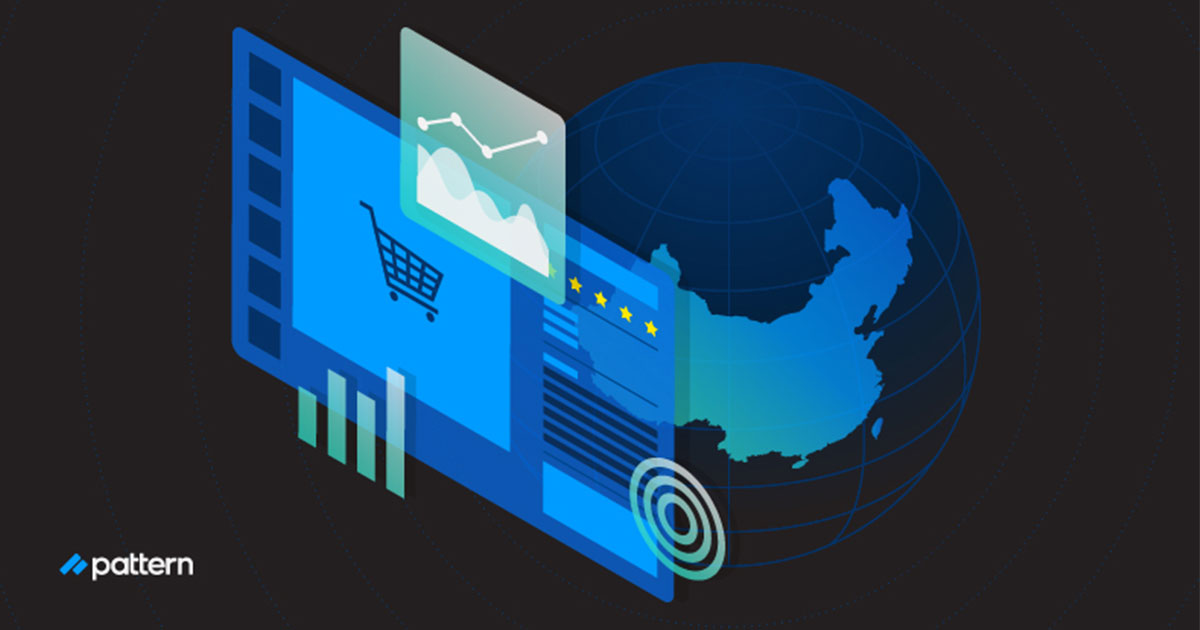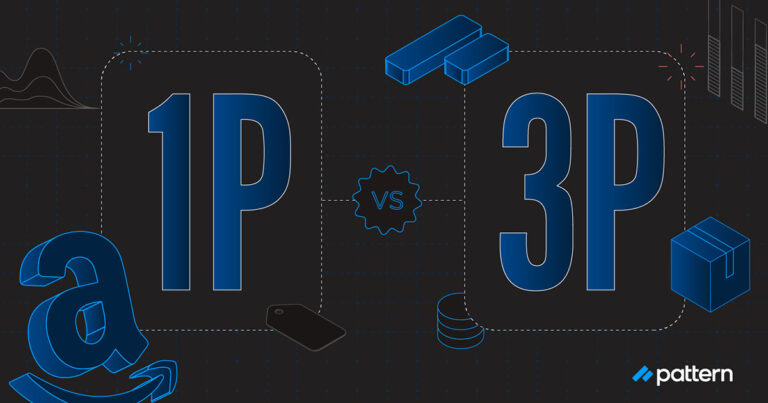Executives seeing success in their current ecommerce strategy view China as the next step to increase their profitability. When you look at the numbers, it is easy to understand the logic—the U.S. currently has a 22% ecommerce penetration rate, while China sits at around 50%. And when you consider that China’s population is 4 times that of the U.S., you can begin to understand the magnitude of the opportunity. It has the largest digital buyer population in the world, and in 2021, China contributed to over half of the world’s ecommerce retail sales.
It’s clear that achieving next level ecommerce success might require a brand presence in China, and, if you’re prepared to make a long-term investment in growing your product presence and sales globally, expanding into China can be a great move.
As you think about growing globally, brands typically find greater success when they have a partner guiding them through the process. As the expert in ecommerce acceleration, Pattern has the global resources and local market expertise necessary to make a successful transition into new marketplaces, including China. Partnering with Pattern means your brand has access to our global network of fulfillment services and logistics, top-level data analysts and insights, proprietary technology, and local experts to help with in-market regulations and customs laws—we can help you execute a profitable, long-term strategy tailored for your brand.
3 Ways Brands Will Know if They are Ready to Expand into China
1. Understand the Required Investment
Most brands think of expanding into China as a quick way to boost their product sales, or something they can experiment with for short-term gains. This may be somewhat true when expanding into new domestic markets, but expanding into China requires a much bigger commitment and many more resources than brands usually expect.
Almost every brand that Pattern launches in China finds success on Tmall, Alibaba and other marketplaces, but starting with the right mindset is key to their performance. We like to ask brands, “Are you willing to lose money for the next five years in order to expand to China?”
This certainly isn’t the standard timeframe that most brands experience, but it helps leaders understand that this move is about long-term strategy, rather than short-term wins. It takes a huge effort in acquiring resources, establishing a solid strategy, and staying persistent over time to really see improvement in your profits.
Pattern’s local market experts provide brands with additional, crucial insights you’ll need to factor in as well, like understanding regulatory and customs costs, multimedia resources you’ll need for China-specific listings, product filing needs for your brand, and other hidden fees you haven’t considered yet.
2. Conduct Extensive Market Research
It’s easy to get excited about the profit potential in China, but the size of the opportunity also signifies the difficulty in taking advantage of it—the competitive landscape of ecommerce in China is much larger and more intense than it is domestically. It’s hard enough to compete in U.S. ecommerce when you’re on the second page of Amazon. How do you compete when you’re showing up on the 200th page of Tmall?
Every brand must do its research. You’ll need to know things like: which comparable products already exist in China? Is your product already manufactured or sold there? Is there demand for this product? How does your product work with the cultural nuances of China vs the U.S.? What is your pricing strategy and promotional expectations?
Another big consideration is the dynamics of the products you’re trying to sell. For instance, many people don’t understand that most buyers in China don’t trust ecommerce sellers. There’s a huge amount of fake items, so every product you sell needs to have an authentic and informed customer service touchpoint. If you’re not prepared to provide the manpower and resources to execute exceptional customer service, implementing that support late in the game can be a big setback to your successful expansion.
3. Develop Strong Online and Offline Activation Strategy
Once you’ve done your research to understand the dynamics of your product in China and how it fits into the landscape, you’ll have to develop a solid activation strategy for going forward, both on- and offline.
The sheer volume of transactions in the China marketplace and the number of products available makes succeeding there much trickier than on U.S. marketplaces. Brands typically have a much harder time achieving consistent performance in China, especially if they’re already struggling with getting product to perform well domestically. So, before you expand to China, you’ll need to have a clear, foolproof online strategy for advertising, product listings, optimizations, and more to guide you on your way
An offline activation strategy is a must, too. For instance, the cost and hassle of distributing your products in China can be a big surprise to brands. In order to get product into China, you’ll need to decide if you’d like to establish domestic representation, which means working with a trading partner (which has its own additional costs), or using the cross-border distribution method, which requires setting up an expensive flagship Tmall store in China.
Your offline strategy also needs to include ways to introduce your products to consumers so they can physically interact with them to continue building trust with your brand and expanding your customer base. Pattern helps our partners to achieve this with product placement opportunities at in-person events, brick and mortar stores, and other locations.
Another consideration: it’s smart to avoid working with a Chinese trading partner as you expand to help you stay in control of your brand. Pattern’s brand partnership approach involves buying your inventory and managing all the logistics necessary to get your product into market and, ultimately, in the hands of your consumers.
Reach Marketplace Success in China with an Ecommerce Accelerator
Expanding to China marketplaces is a great idea for brands looking to take their ecommerce success to new heights. If you’re prepared to make the investment, you’ve done the necessary market research for all aspects of your product’s performance, and you have a great activation strategy in place for both online and offline success, you’ll be set to take advantage of the huge opportunity with Chinese consumers.
As a Pattern partner, you can access our extensive expertise and resources to succeed both domestically and internationally. We have an established presence in China (with over 150 employees, 3 offices, and our own audit warehouses) and teams of highly experienced global experts to help your products perform their best and increase profitability for your brand as a whole.
Contact us to learn how we can establish or improve your business on a global scale.





